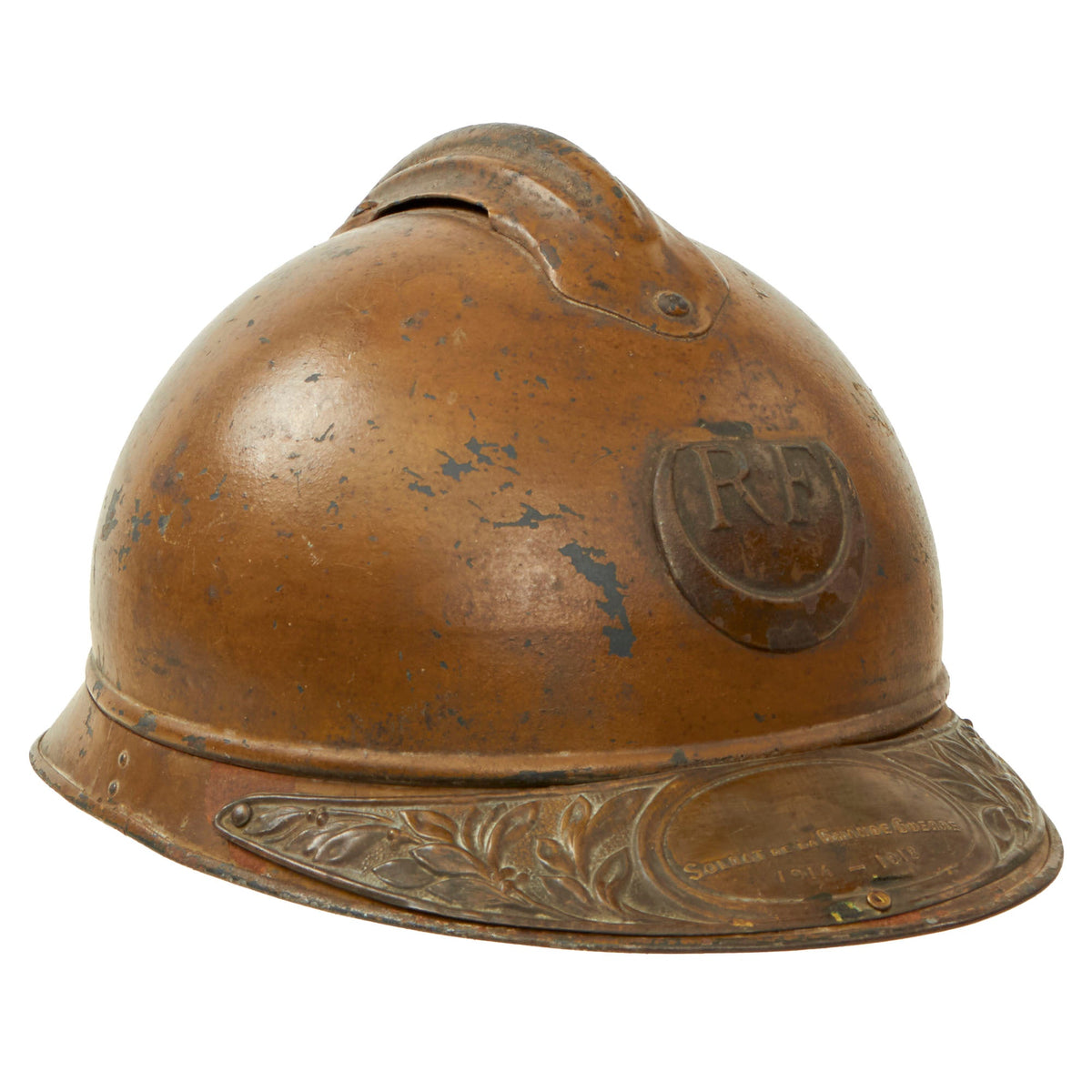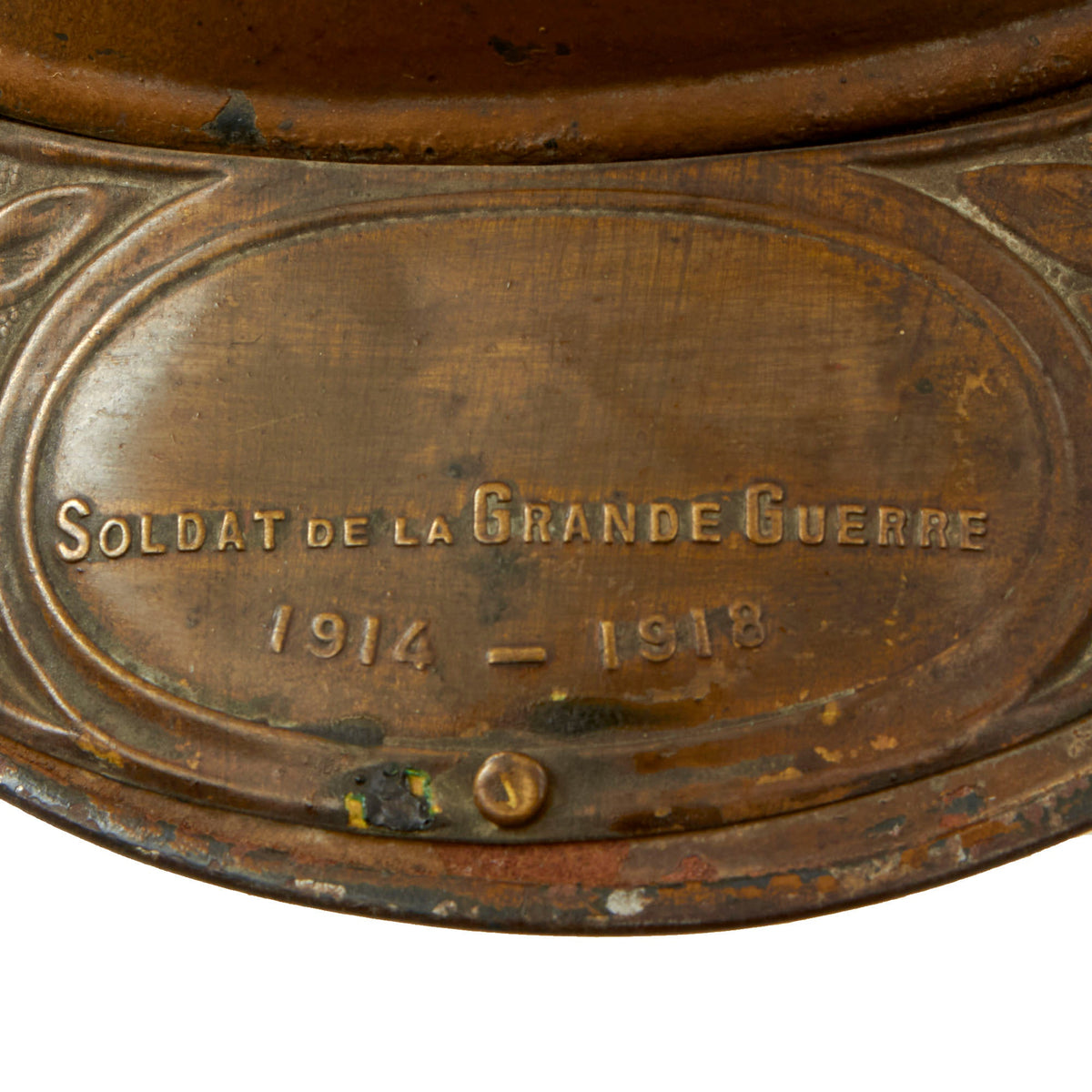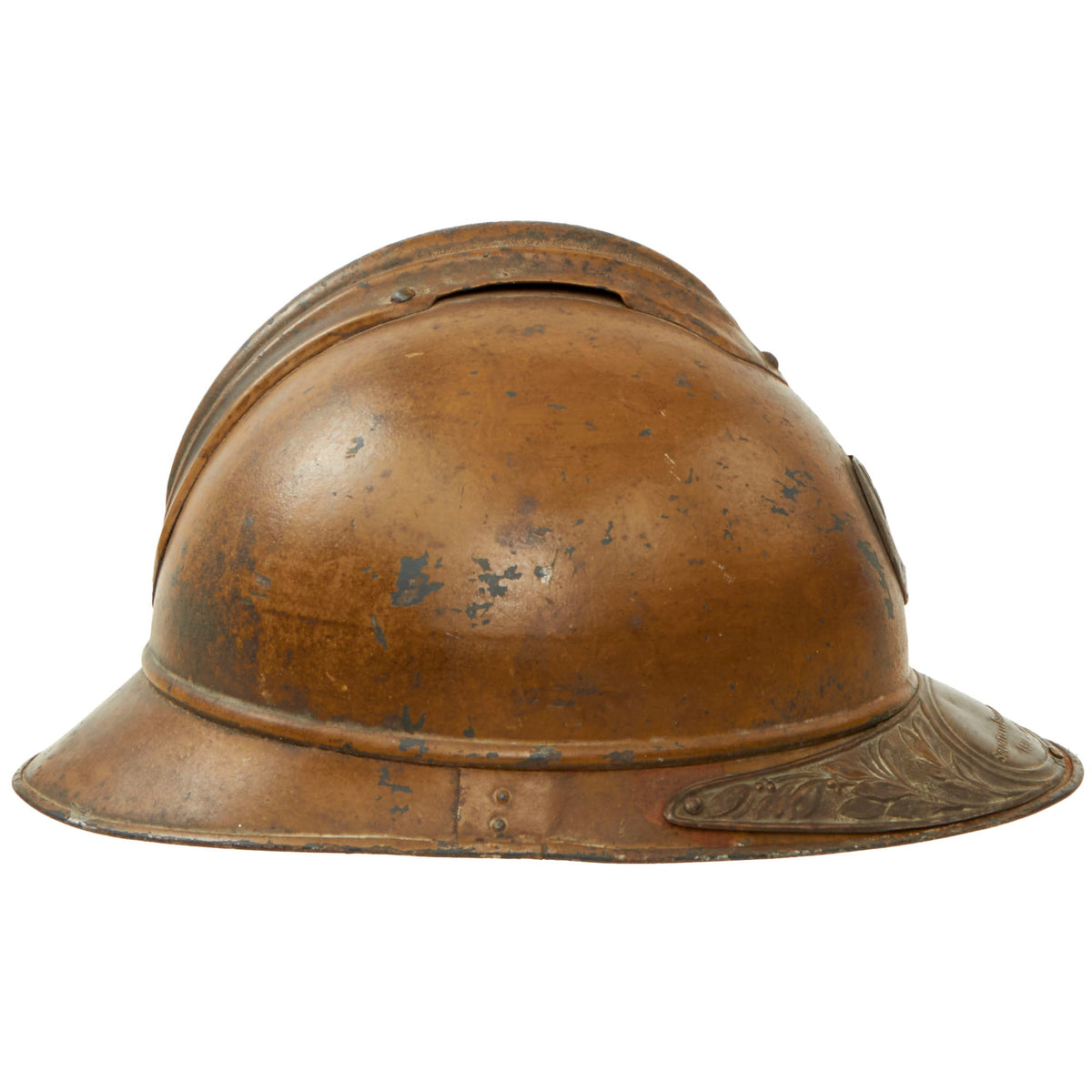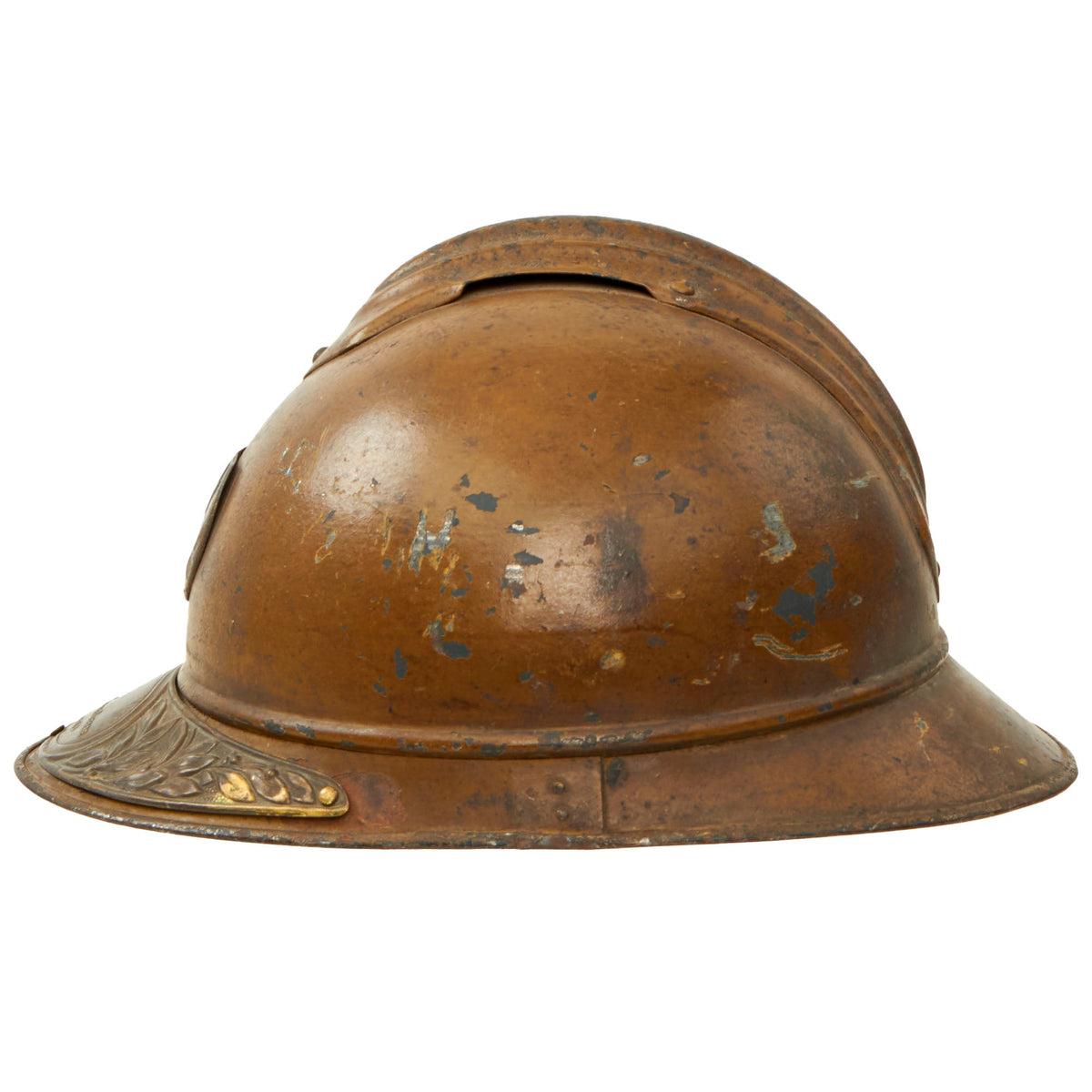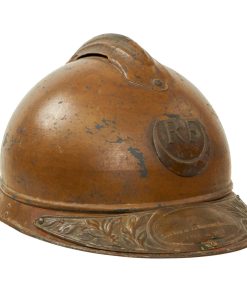Original French WWI Zouave North African Troops M1915 Adrian Helmet with Veteran’s Plate & Liner Original Items
$ 650,00 $ 195,00
Original Item: Only One Available. This is a nice example of a genuine World War I M1915 French Army “Adrian” steel helmet with a dark brown color and a “crescent moon” badge for the rare Zouave & North African troops. On top of that, the helmet features a rare post-war Veteran’s plate for the 1914-1918 War.
The front of the helmet still has its original French “Crescent Moon” badge, indicating use by Zouave and Tirailleurs units, raised from the local populations in the North African French Colonies. The badge has the standard R F on the armor, for Republique Francaise. The dark paint is still almost fully retained on the helmet, with some chipping that reveals the original horizon blue paint underneath. The undersize of the helmet is also painted this color, but under the liner, the original blue paint can still be seen. The helmet has a full original late-war liner, with 6 leather tongues protruding from a leather sweatband. The chinstrap on this example is unfortunately missing.
The 1914-1918 Veteran’s plate has been inserted directly onto the visor of the helmet, and the prongs are visible on the underside in three spots as shown, with oxidation around the holes confirming that it has been on this helmet for a very long time. The plate reads SOLDAT DE LA GRANDE GUERRE 1914 – 1918. There is heavy wear on the plate concurrent with the rest of the helmet, with some spots where the original gilt finish peeks out.
This is a phenomenal example of a very rare WWI M1915 Adrian helmet. This is one of the rarest helmet badges to find on a First World War helmet, and one that we have only offered a handful of times before. This helmet comes ready for further research and display!
The M15 Adrian helmet (French: Casque Adrian) was a combat helmet issued to the French Army during World War I. It was the first standard helmet of the French Army and was designed when millions of French troops were engaged in trench warfare, and head wounds from the falling shrapnel generated by the new technique of indirect fire became a frequent cause of battlefield casualties. Introduced in 1915, it was the first modern steel helmet and it served as the basic helmet of many armies well into the 1930s. Initially issued to infantry soldiers, in modified form they were also issued to cavalry and tank crews. A subsequent version, the M26, was used during World War II.
Fast Shipping with Professional Packaging
Thanks to our longstanding association with UPS FedEx DHL, and other major international carriers, we are able to provide a range of shipping options. Our warehouse staff is expertly trained and will wrap your products according to our exact and precise specifications. Prior to shipping, your goods will be thoroughly examined and securely secured. We ship to thousands clients each day across multiple countries. This shows how we're dedicated to be the largest retailer on the internet. Warehouses and distribution centres can be located throughout Europe as well as the USA.
Note: Orders with more than one item will be assigned a processing date depending on the item.
Before shipping before shipping, we'll conduct a thorough inspection of the items you have ordered. Today, the majority of orders will be delivered within 48 hours. The delivery time will be between 3-7 days.
Returns
The stock is dynamic and we cannot completely manage it because multiple stakeholders are involved, including our factory and warehouse. So the actual stock may alter at any time. It's possible that you may not receive your order once the order has been made.
Our policy is valid for a period of 30 days. If you don't receive the product within 30 days, we are not able to issue a refund or an exchange.
You can only return an item if it is unused and in the same state as the day you received it. You must have the item in its original packaging.
Related products
Uncategorized
Uncategorized
Uncategorized
Uncategorized
Armoured Fighting Vehicles of the World: AFVs of World War One (Hardcover Book) New Made Items
Uncategorized
Band of Brothers ORIGINAL GERMAN WWII Le. F.H. 18 10.5cm ARTILLERY PIECE Original Items
Uncategorized
Uncategorized
Uncategorized
Uncategorized
Uncategorized
Angolan Rebel 1970s era 60mm Inert Display Mortar from Angolan Civil War Original Items
Uncategorized
Uncategorized
Uncategorized
Uncategorized
Uncategorized
Uncategorized
